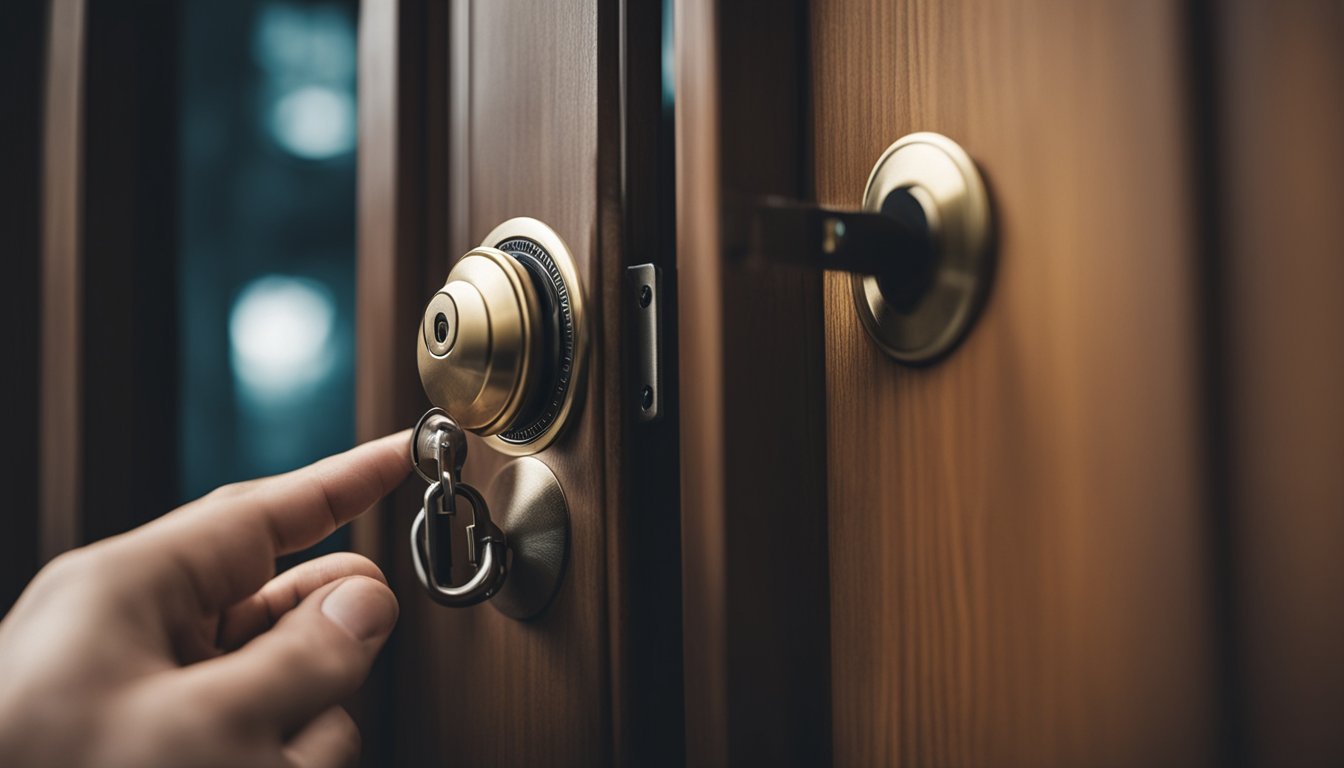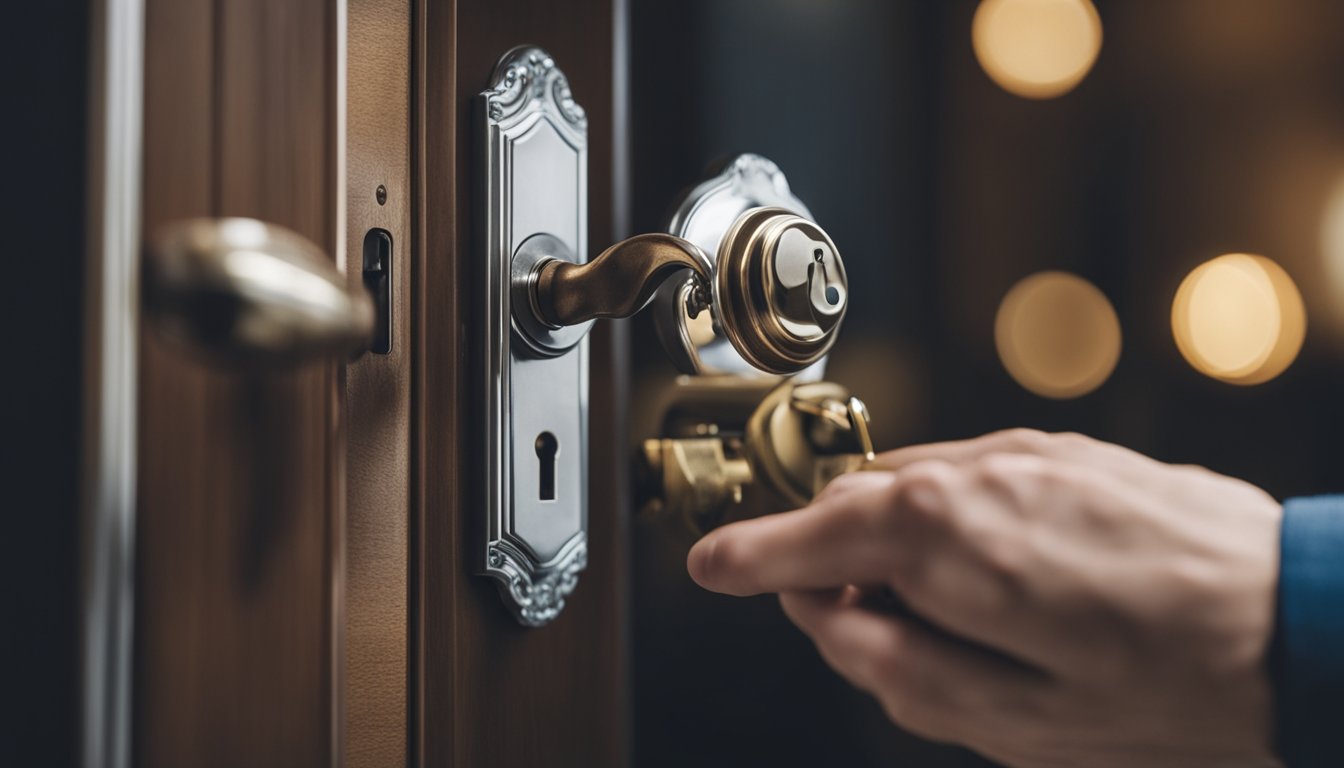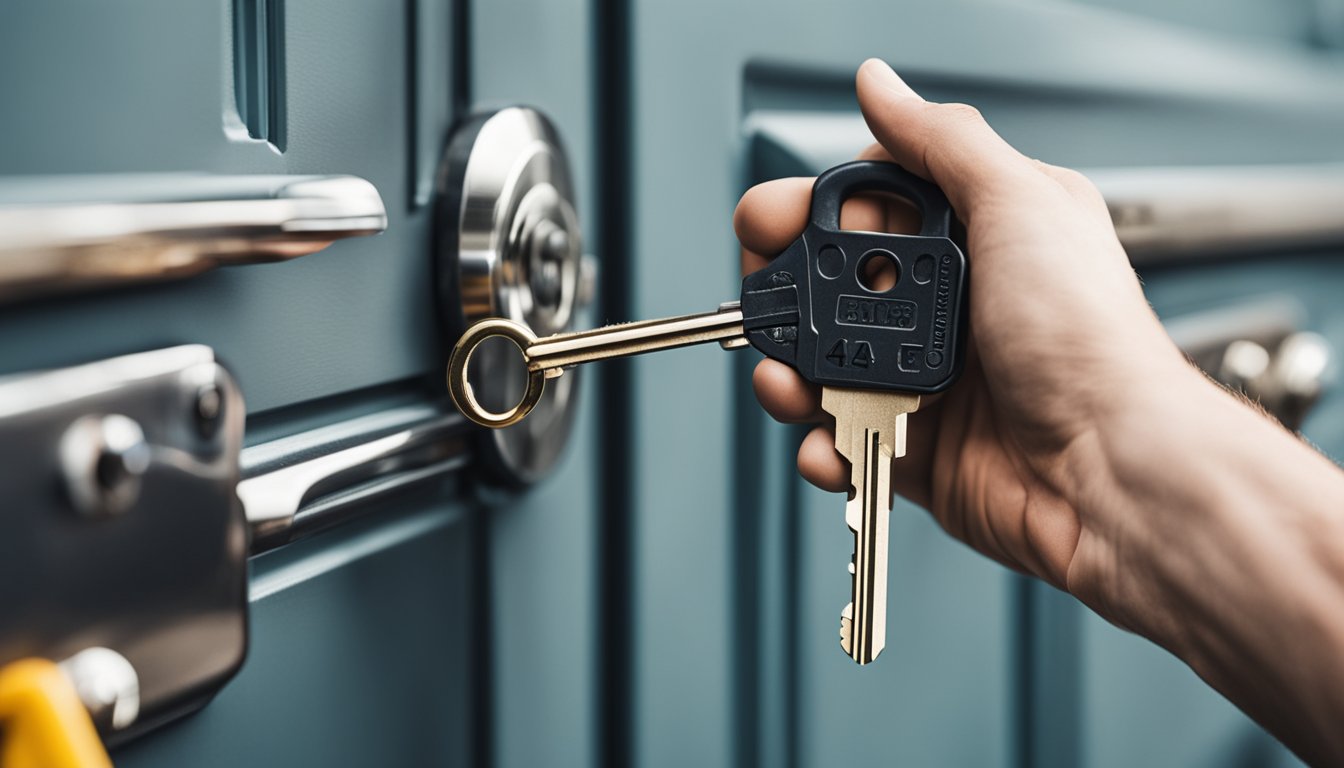Late updated: 03 Nov 2024 11:11
Written by: Elena Prescott
Guide To Changing Your Home Locks Safely: Essential Tips for Secure Lock Replacement
Ensuring the security of our homes starts with having reliable door locks. Many of us overlook this simple yet crucial aspect of home security. Changing the locks on your home not only enhances security but also provides peace of mind. Whether it's a new home or an upgrade, understanding the various components and differences in locks is essential.

Let's evaluate our home's locking system comprehensively, leaving no exterior door unchecked. Choosing between rekeying and replacing locks involves more than a quick decision; it requires assessing the specific needs of our home. By doing so, we ensure a layered approach to safety without compromising convenience.
Through a methodical replacement process, we can transform our entrance from just a door to a secure shield. From removing the old hardware to installing brand new mechanisms, every step is an investment in safety. This guide offers practical insights into achieving a safe and secure home environment.
Key Takeaways
- Changing locks enhances home security.
- Assess the needs before selecting lock options.
- Follow step-by-step for effective installation.
Assessing Your Home's Locking System
Before changing your home locks, it's essential to thoroughly evaluate the current locking system. This involves understanding the necessity for replacements, recognising various lock types and mechanisms, and accurately measuring for new locks to ensure safety and security.
Determining the Need for Replacement
Assessing whether your locks need replacement starts with their condition. Consider if there have been breaches in security, such as a break-in, or if the locks appear worn or damaged.
If you've recently moved into a new home or had a change in roommates, it might be wise to replace locks to ensure complete control over who has access. Older locks may be less secure, prompting an upgrade to more advanced options like deadbolts or smart locks, enhancing both safety and peace of mind.
Types of Locks and Their Mechanisms
Understanding the types and mechanisms of locks is crucial for selecting the right replacement. Common options include cylindrical locks, which are versatile and easy to install, and deadbolt locks, which provide enhanced security against forced entry.
Mortise locks are known for their durability, being recessed into the door, and are suitable for heavy-duty applications. Smart locks offer the latest in security technology, allowing remote access via smartphones and integration with home automation systems. Choosing the appropriate lock depends on specific needs relating to security level and door type.
Measuring for the New Lock
Proper measurements ensure that the new lock fits correctly and operates smoothly. Start by using a tape measure to determine the backset, which is the distance from the edge of the door to the centre of the lock cylinder.
Measure the door's thickness to ensure the replacement lock will sit flush. Measure both vertical and horizontal lengths for mortise locks, noting any differences from standard sizes.
Accurate door measurements prevent compatibility issues with new latches or door hardware, ensuring a precise fit and optimal performance. Cross-check these dimensions against the product specifications for the lock you intend to install.
The Lock Replacement Process

Replacing your door lock is a vital step to enhancing home security. This process includes removing the old lock, installing a new one, and deciding whether to re-key or replace the entire lock. Here, we'll explore these steps further to guide you through successful lock replacement.
Removing the Old Door Lock
To start, gather your tools. You'll likely need a screwdriver, a drill, and pliers. Begin by unscrewing the cover plates and the strike plate. Once exposed, remove the old door knob or handle by loosening any visible screws.
Next, detach the latch assembly from the door edge. This might require some finesse, especially if it's been in place a long time. Be sure to keep track of any screws or small parts, as they can become easily lost. Once removed, inspect the door for any damage that may need attention before proceeding with the new lock.
Installing the New Locking Device
With the old lock out, prepare to install the new lock mechanism. Compare the new lock's dimensions with the existing holes to ensure a good fit. Insert the latch mechanism into the door's edge, ensuring the sloped edge faces the direction the door closes.
Fit the new handle or knob and align it with the latch. Secure the components by fastening screws, checking alignment by testing the movement of the lock. Make sure the locking device operates smoothly without any resistance. Additionally, adjust the internal latch tab so it correctly aligns with the strike plate for a secure latch.
Finalising the Installation
After installing the new locking device, make adjustments for an optimal fit. Ensure the strike plate in the door frame aligns perfectly with the latch. If necessary, make small adjustments or replace the strike plate to avoid any sticking.
Consider weatherproofing if the door is exposed to elements. Double-check all screws and components for tightness. Test the lock multiple times from both sides, verifying the keys also function appropriately without excess play. This helps safeguard against potential weaknesses that could lead to issues during operation.
Re-keying Versus Replacing Locks
Deciding between re-keying existing locks and complete replacement depends on your circumstances. Re-keying involves altering the internal mechanism of an existing lock. This is often more cost-effective than a full replacement and can be done with a rekeying kit.
In contrast, lock replacement is necessary when the lock is damaged or unsuitable for re-keying. It's also preferred when moving into a new home to eliminate any unauthorised access. Each option has its benefits and draw, so assess your security needs carefully before making a decision.
Frequently Asked Questions

Changing home locks is a significant aspect of enhancing security. Below, we address some common concerns to help you make informed decisions.
What is the most cost-effective method for altering the locks on my home?
The cost varies based on time and circumstances. Hiring a locksmith during regular business hours is usually cheaper (£65/hour) compared to out-of-hours services, which could cost £80-£200 per hour. DIY might save money, yet it demands tools and expertise.
Should I opt for a locksmith or attempt to change the locks myself?
Choosing between a locksmith and a DIY approach depends on your confidence and skill level. While a locksmith guarantees professional results, DIY can be an economical choice if you have the right tools and follow detailed instructions.
What are the differences between rekeying a lock and replacing it?
Rekeying alters the internal pins of an existing lock, rendering old keys obsolete without the need to change the lock body. Replacing involves installing a new lock. Rekeying is faster and cheaper, whereas replacing offers an opportunity for enhanced security features.
How frequently should lock replacement be considered for home security?
Consider replacing locks after any security breach, or every few years to keep up with technological advances. Regular assessments ensure locks function optimally and accommodate lifestyle changes, such as new residents or lost keys.
Is it a common practice to replace all the locks after purchasing a new property?
Yes, it's advisable to replace locks upon acquiring a new property. Previous key holders may still have access, so changing locks ensures only authorised individuals can enter. This minimises potential security risks.
What steps should be taken to ensure a safe transition of home locks?
Firstly, plan the transition by listing all locks and corresponding keys. Determine if each needs rekeying or replacement. Engage professional locksmiths if necessary. Ensure you receive all new keys, and reset any smart lock codes for comprehensive security.
